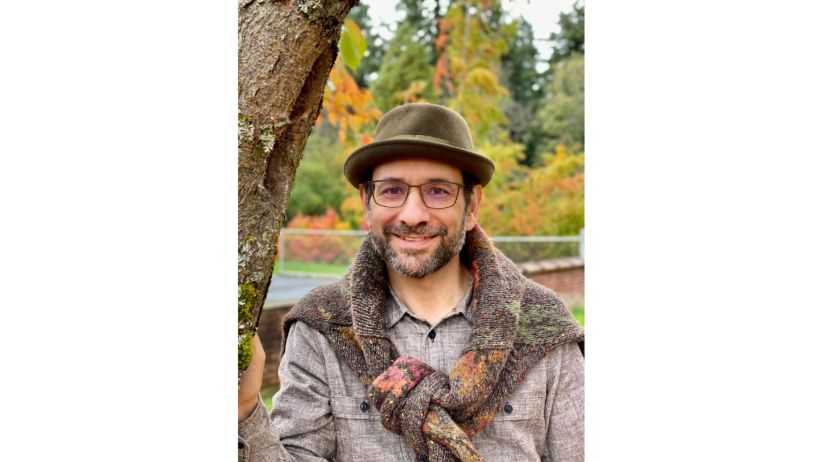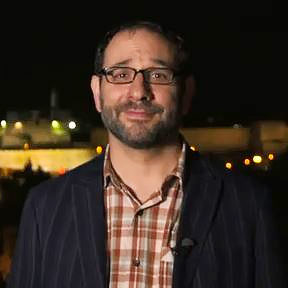Turn It Again: Torah Wisdom for Today
In Pirkei Avot, a book of maxims in the Mishnah, an ancient rabbi, Ben Bag-Bag said about Torah study, “Hafokh bah, va’Hafokh vah, d’khola bah.” Turn it over and over, for everything is in it. For two thousand years, that’s what Jews have done. Here is another turning.
Parsha Tzav 2025
Sacred Silence and the Limits of Language
Claude Debussy is credited with stating that “music is the silence between the notes.” If you have ever lingered over his compositions, Clair de lune or Prélude à l’après-midi d’un faune, for instance, the rests between the notes carry tremendous emotional resonance. They create the space each note needs to carry its meaning.
Debussy was a 19th century composer who passed before the world was overrun with noise pollution. Indeed, as the internal combustion engine proliferated, the 20th century became the noisiest century in the history of the world. Noise intruded into the quietest places, shattering the seclusion of once-protected wilderness sanctuaries.
When I was young, there were two types of silence that frightened me, because I didn’t know what to do with them. One was my own silence in social settings. Growing up in New York, I was exposed to a set of conventions that valued constant engagement in social settings. Patter and storytelling were part of the milieu. The sociologist, Deborah Tannen, named this speech pattern “high involvement style.” In a New York conversation, people take quick turns, interjecting and backchanneling to demonstrate engagement with their interlocutor. Tannen contrasted this with the high-considerateness style, so typical of Midwestern or WASP-influenced conversational norms, where speakers wait their turn and avoid overlap. In that fast-talking, urban East Coast culture, silence in conversation was the ultimate expression of disinterest in what a speaker was saying.
But there was another kind of silence that unsettled me more profoundly: the silence of intimacy, the silence of my father. He grew up an only child to parents who were quietist by nature, especially within that New York City environment. Like an old EF Hutton commercial, when my father spoke, people listened, because his silences stretched long and deep. Sitting quietly with him didn’t provide me with a sense of ease, but of anxiety, for he seemed unreachable.
This week’s Torah reading provides a poignant tableau in which silence is explored, first in the Torah itself, then in a series of pointed commentaries. It is the sudden death of Nadav and Avihu that gives rise to one of the most unsettling narratives in all of Leviticus. After two of Aaron’s sons are consumed by divine fire after offering “strange fire” before God, the Torah records Aaron’s response with one striking phrase: Vayidom Aharon—”And Aaron was silent” (Leviticus 10:3).
What does it mean to fall silent in the face of such personal catastrophe? Is this a form of acceptance, an act of protest, or something else entirely?
The silence of Aaron has reverberated through generations of commentators, each bringing their lens to bear on this brief but powerful moment. Across traditional, Hasidic, and contemporary interpretations, Aaron’s silence is understood as encompassing grief, resilience, protest, and spiritual processing. What is especially remarkable is how modern psychological research affirms these ancient insights, illuminating the multifaceted role silence plays in human experience.
Silent Acceptance, Silent Paralysis
Rashi (1040–1105) interprets Aaron’s silence as an act of acceptance and restraint. Aaron does not lash out in anger or even ask why. His silence is seen as a submission to divine judgment, and Rashi notes that Aaron was rewarded for this quietude. It becomes an emblem of faith.
Nachmanides (Ramban, 1194–1270) offers a more emotionally nuanced reading. He suggests that Aaron initially cried out in grief but then fell silent, paralleling the verse in Lamentations 2:18, “Do not be silent.” For Ramban, Aaron’s silence followed an expression of mourning, signaling a complex internal process where the voice gives way to quiet.
In a darker key, Isaac Abravanel (1437–1508) posits that Aaron’s heart turned to stone, leaving him speechless. In this reading, silence is not acceptance but emotional paralysis, a profound shock that leaves no words.
Rabbi Naftali Reich reflects on Aaron’s silence as demonstrating inner harmony and spiritual tranquility. For Reich, silence is not simply the absence of speech but a cultivated state of peace amid turmoil.
Silence as Spiritual Alignment
Hasidic commentaries deepen the spiritual dimensions of Aaron’s silence. Rabbi Levi Yitzchak of Berditchev (1740–1809) frames the deaths of Nadav and Avihu not as punishments but as consequences of their intense spiritual yearning. Their souls, having ascended too close to the divine, could no longer remain tethered to the physical world. In this context, Aaron’s silence reflects an understanding that their deaths, while tragic, occurred within a mystical framework. His quiet becomes an acknowledgment of mysteries beyond human grasp.
The Sanzer-Klausenberger Rebbe (Rabbi Yekusiel Yehudah Halberstam, 1905–1994) understands Aaron’s silence as a powerful response to suffering. In the face of inexplicable tragedy, silence becomes a form of resilience and a testament to unwavering faith. Sometimes, words cannot contain the weight of experience; only silence remains sufficient.
In a modern psychological frame, commentators also explore Aaron’s silence as an expression of overwhelming grief, suggesting that silence conveys emotion more profoundly than words ever could. It is not avoidance, but the fullest presence.
But silence can also be protest, a form of dissent, a way of refusing to rationalize or accept the incomprehensible. This silent protest is itself a moral stance.
Finally, in meditation, silence is the space where we resist the urge to explain, allowing experience to settle and reveal itself. This silence gives rise to greater awareness. If, as Debussy believed, silence gives music its breath and shape, then it also grants the soul the space to listen inward and hear itself.
Indeed, contemporary studies show how silent practices activate the brain’s default mode network, associated with self-reflection and emotional regulation. This network fosters internal stability, allowing individuals to process complex emotions and maintain resilience during hardship.
Other research proposes that silence can serve as a protective measure in extreme contexts, allowing individuals to process trauma internally without the pressure of immediate verbalization. This silent processing helps prevent emotional overload, making space for healing.
The Silence We Need
Silence is not monolithic. It is a vessel that holds grief, resilience, protest, and contemplation. It can be a spiritual discipline, a protective cocoon, or a moral stand. In opposition to this, contemporary noise, which is not only the physical sounds of engines, but of our social media, leaves a pandemic of agitation and anxiety in its wake. Studies show that 97% of the continental U.S. is impacted by vehicle noise, and natural quiet has become a rare commodity—even in protected wilderness areas.
My childhood fears of silence have become the social norm, in which vast numbers of people have lost the capacity to sit in silence, removed from the stimulus of our devices.
I still wish my father would have broken his silence more, opening a door so that I could see more deeply into his heart. Yet in the intervening years, the memory of his silence no longer stings with abandonment or unease. As with the silence of Aaron, his example revealed not only the limits of language but the quiet possibilities that emerge when words fall away. Whether in mourning, in resilience, or in protest, silence becomes a sacred space where the human spirit meets the unknown.




